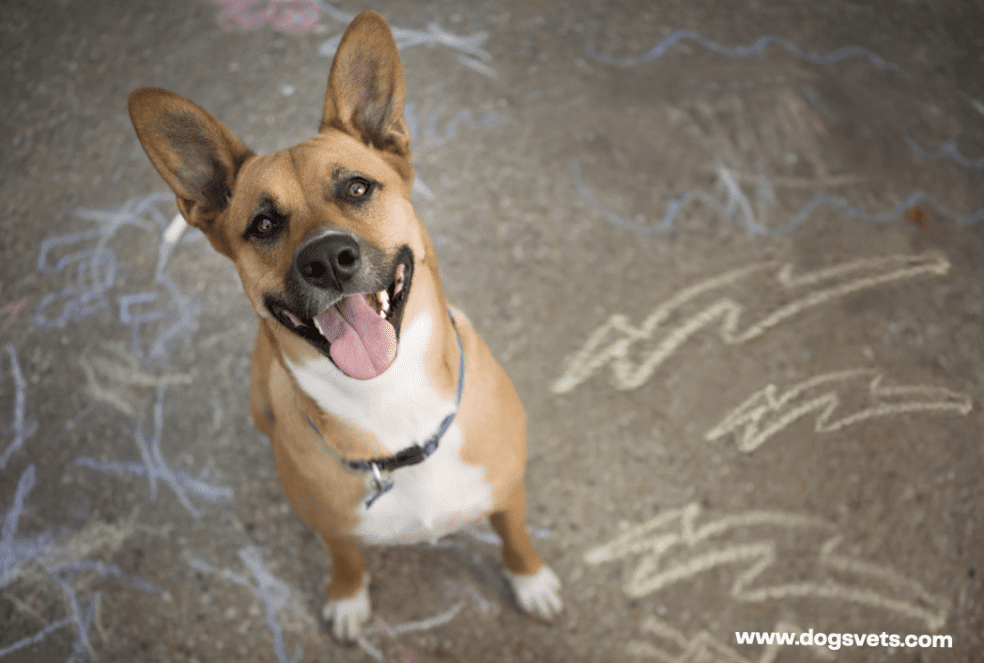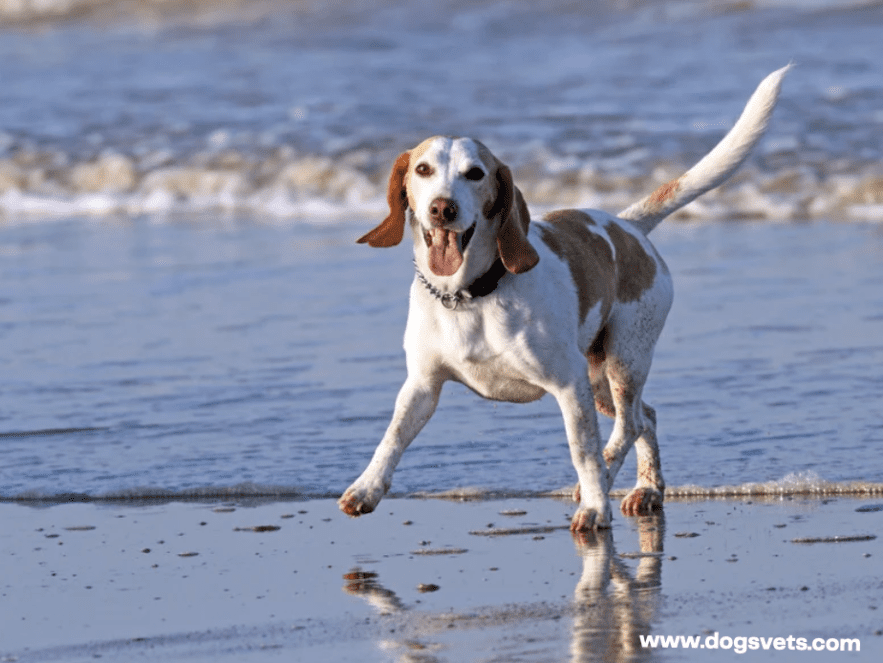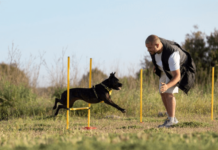Last Updated on September 3, 2024 by Dogs Vets
6 Ways to Handle a High-Energy Dog
Dogs make for great pets. Or, that’s at least the opinion of most of America — despite any discrepancies between just how many Americans actually own pets, the fact remains that dogs are still the most commonly owned pet in the United States.
Even though dogs are owned in a majority of the households that have pets, they are still a huge responsibility.
Not only do they have to be fed, but they also have to be taken outside and trained not to use the bathroom indoors or destroy furniture, and you usually have to administer medication to them as they get older or when they’re sick.
Plus, you have to make sure they have all the things they need, such as a custom pet tag with all their important medical information. And, none of this includes the training that goes into owning a dog, especially one that has a lot of high energy.
More Facts and Tips
High-energy dogs can be a handful, but with the right approach, they can be wonderful companions. Here are some tips to help you manage their energy:
Regular Exercise
- Daily Walks: Consistent walks are essential for burning off excess energy.
- Playtime: Engage your dog in interactive games like fetch, tug-of-war, or chase.
- Dog Parks: Socialize your dog while letting them run and play freely.
Mental Stimulation
- Training: Teach your dog new tricks to keep their mind engaged.
- Puzzle Toys: Provide toys that require problem-solving to dispense treats.
- Scent Work: Train your dog to track and find hidden objects.
Lifestyle Adjustments
- Routine: Maintain a consistent schedule to avoid boredom and anxiety.
- Interactive Toys: Leave interactive toys out for your dog when you’re away.
- Doggy Daycare: Consider doggy daycare for socialization and exercise.
Behavioral Training
- Positive Reinforcement: Reward good behavior to encourage desired actions.
- Professional Training: Consult a professional trainer for specific guidance.
- Avoid Punishment: Negative reinforcement can lead to anxiety and aggression.
Health Considerations
- Vet Check-ups: Ensure your dog is in good health to rule out medical issues.
- Nutrition: A balanced diet can support energy levels and overall health.
- Rest: Allow your dog adequate rest time to recharge.
Here are some of the best ways you can handle a high-energy dog!
What Dogs Tend to Have the Highest Levels of Energy?
Different dog breeds come with different temperaments. Throughout history, humans have bred dogs for a variety of reasons, usually around farming or working. As the need for different types of dogs changed, so did the types of dogs bred.
Today, there are at least 200 different breeds of dogs around the world. Some dogs tend to have more energy than others. Here are the most common breeds of dogs that have high levels of energy.
- Border collie: While extremely agile and highly intelligent, border collies are also some of the most active and energetic dogs to exist. They’re known for jumping on humans and running around like they’re trying to win an Olympic track race.
- Siberian huskies: Since they were bred to pull sleds full of people and cargo long distances over ice, Siberian huskies can be quite energetic, especially if they don’t get to spend time outside. That’s why it’s so important to only own dogs in environments they’re made for, because otherwise they can start behaving poorly or develop depression and anxiety. Siberian huskies do best in cold weather environments, where they can run around in the snow.
- Australian shepherds: Bred to corral livestock and herd other animals, Australian shepherds are very energetic. They can easily run long distances and appear to bug other pets and humans if they don’t have something to “work” or herd. This can make them difficult to own, especially if you’re unable to provide them the outlet they need to work out their energy.
Ways to Handle a High Energy Dog
Just because you have a high-energy dog, it doesn’t mean you have to give it back to the shelter. Instead, try some of these ways to handle a high-energy dog!
- Establish play time: Dogs need time to play — it’s a fact. Not playing can lead to cognitive dysfunction for dogs as they get older. In fact, there are a lot of correlations and similarities between cognitive dysfunction in dogs and Alzheimer’s disease in humans. When dogs don’t have stimulation to their brains, they can develop cognitive dysfunction later on in life. Establishing play time from a young age can keep your dog healthy for longer and help them stay active.You can buy some interactive pet toys and play with your furry friends.
- Train them: Easier said than done, but training is just one of the many ways you can handle a high-energy dog. Work with a professional trainer to figure out how best to lead and guide your dog. A high-energy dog needs ways to focus and settle down.A professional trainer can help you with figuring that out! Together, you and your dog’s trainer can find solutions to their high energy and figure out a process for stimulating them without tiring them out.
- Avoid working them up: Getting in your dogs’ face, playing sounds of other dogs and even waking them up from a sound sleep are all different ways you could possibly work your dog up into a high-energy state. While stimulating them and playing with your dog is a way to work off their energy, working them up constantly will have the opposite effect. During the times where you need them to chill out, such as at night or early in the morning, they may be excited and highly energetic. That’s the exact opposite of what you need!

4. Give them an enclosed space to play in: Preferably, you’ll fence in your yard with an appropriate height of enclosure (some dogs can jump six feet!) so they can run around outside without you worrying they’ll run away or get lost. Of course, that’s why it’s so important to have them wear a silicone pet tag with all their information on it whenever they’re not in the house!
These tags can really be the difference between life and death for a dog. In the event your pup does happen to run away or get lost, their pet tag can provide someone with vital information about how to get them back to you, especially if they take specific medications each day.
5. Go to bed at the same time every night: Even if you don’t fall asleep right away, you should still put together a bedtime routine that your dog can recognize. This will encourage them to calm down because they know you’ll be heading to bed soon.
Brush your teeth, set your coffee pot for the next morning, change into pajamas and anything else that you feel is all part of a nightly routine for you. The more consistently you do this, the sooner your dog will start to calm down.
Who knows? Your dog may even start following you and asking you to go to bed themselves!
6. Put them in a crate: Sometimes, you have to put the dog in a crate to get them to calm down. When all else fails, crating your dog can be a big deterrent to energy. While some dog owners feel that this will only make your dog more energetic, sometimes it has the opposite effect.
Remember, every dog is different. What works for one may not work for another. Experiment with different activities and techniques to find what best suits your dog’s personality and energy level.
Would you like more specific advice based on your dog’s breed or behavior?
Fact Check
We hope you enjoyed this article… What are your thoughts?
Рleаse let us knоw yоur thоughts in the соmments seсtiоn. Feel free to share with us in the comments section below.
See also: オンライン ライブ カジノ


















